ION
-
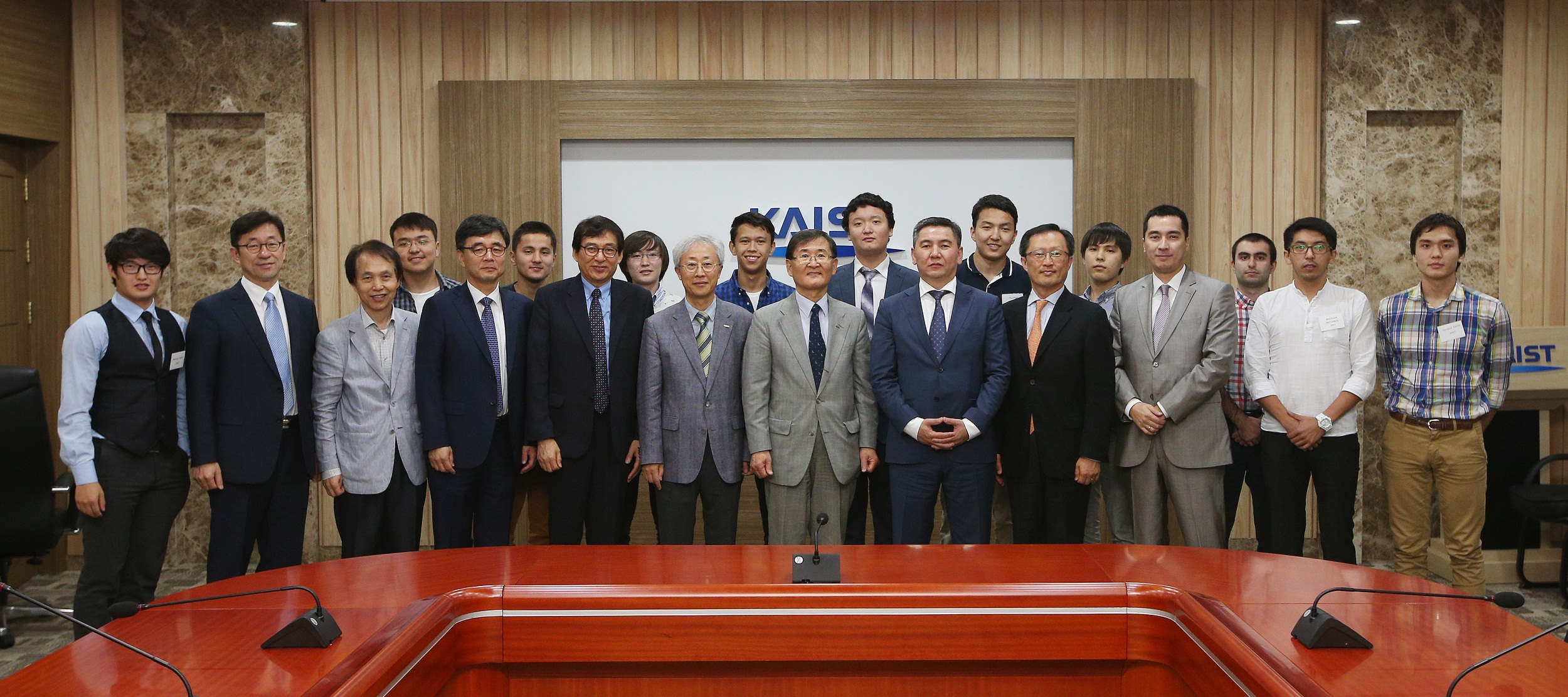 The Minister of Education of Kazakhstan Visits KAIST
The Minister of Education of the Republic of Kazakhstan, Aslan Sarinzhipov, and his delegation visited KAIST on June 30, 2015.
Dr. Young-Suk Ji, the Chairman of Elsevier, an academic publishing company that publishes medical and scientific literature, arranged the visit.
The Kazakh delegation showed great interest in KAIST’s educational system and research programs during their meeting with President Steve Kang of KAIST. In particular, the delegation was most impressed by the startups and entrepreneurship programs established at the KAIST Pangyo Innovation Center.
President Kang said, “I hope the Minister’s visit will help inspire more Kazakh students to come to Korea and study at KAIST.”
Kazakhstan, located in the northern part of Central Asia, gained its independence in 1991 after the collapse of the Soviet Union. Currently, there are 22 Kazakh students studying at KAIST.
2015.07.03 View 5116
The Minister of Education of Kazakhstan Visits KAIST
The Minister of Education of the Republic of Kazakhstan, Aslan Sarinzhipov, and his delegation visited KAIST on June 30, 2015.
Dr. Young-Suk Ji, the Chairman of Elsevier, an academic publishing company that publishes medical and scientific literature, arranged the visit.
The Kazakh delegation showed great interest in KAIST’s educational system and research programs during their meeting with President Steve Kang of KAIST. In particular, the delegation was most impressed by the startups and entrepreneurship programs established at the KAIST Pangyo Innovation Center.
President Kang said, “I hope the Minister’s visit will help inspire more Kazakh students to come to Korea and study at KAIST.”
Kazakhstan, located in the northern part of Central Asia, gained its independence in 1991 after the collapse of the Soviet Union. Currently, there are 22 Kazakh students studying at KAIST.
2015.07.03 View 5116 -
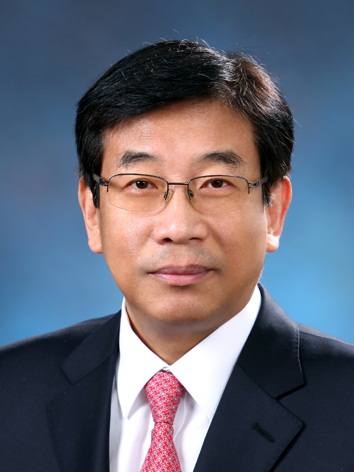 Professor Jae Kyu Lee Appointed the President of Association for Information Systems
Chair Professor Jae Kyu Lee of KAIST’s College of Business was appointed the President of Association for Information Systems (AIS) on July 1, 2015. Professor Lee will serve a one-year term, which will end in June 2016. With four thousand members researching information systems from 90 different nations, AIS is the largest academic society in the fields of information system and business process engineering.
Professor Lee has proposed his idea of “the Bright Internet” as the official vision of AIS. Employing this vision, AIS will create technology and systems, as well as sponsor international cooperation to solve fundamental issues of the Internet including concerns over hacking and cyber-related crimes.
The extent of damage from cyber-related crimes grows each year. Every day, 56 billion junk emails are sent to computers which are hacked and become “zombie” computers. The social cost of such crimes is estimated to be 400 billion US dollars annually.
Based on "the Bright Internet," AIS will build a preventative Internet security system by adopting ground rules that make attackers responsible for the damages from such crimes. The system will also modify technology and other systems to minimize privacy infringement while maintaining security. Finally, the Bright Internet proposes to adopt an international standard for this security system through collaboration with the International Telecommunications Union (ITU).
Professor Lee said, “The vision of the Bright Internet started from an awareness that we needed to resolve issues such as Internet addiction, indiscriminate media exposure, and verbal violence. This vision developed by the experts from all around the world will not only bring a revolution of a reliable Internet platform to a global scale but also reshape the Korean Internet platform.”
2015.07.02 View 7847
Professor Jae Kyu Lee Appointed the President of Association for Information Systems
Chair Professor Jae Kyu Lee of KAIST’s College of Business was appointed the President of Association for Information Systems (AIS) on July 1, 2015. Professor Lee will serve a one-year term, which will end in June 2016. With four thousand members researching information systems from 90 different nations, AIS is the largest academic society in the fields of information system and business process engineering.
Professor Lee has proposed his idea of “the Bright Internet” as the official vision of AIS. Employing this vision, AIS will create technology and systems, as well as sponsor international cooperation to solve fundamental issues of the Internet including concerns over hacking and cyber-related crimes.
The extent of damage from cyber-related crimes grows each year. Every day, 56 billion junk emails are sent to computers which are hacked and become “zombie” computers. The social cost of such crimes is estimated to be 400 billion US dollars annually.
Based on "the Bright Internet," AIS will build a preventative Internet security system by adopting ground rules that make attackers responsible for the damages from such crimes. The system will also modify technology and other systems to minimize privacy infringement while maintaining security. Finally, the Bright Internet proposes to adopt an international standard for this security system through collaboration with the International Telecommunications Union (ITU).
Professor Lee said, “The vision of the Bright Internet started from an awareness that we needed to resolve issues such as Internet addiction, indiscriminate media exposure, and verbal violence. This vision developed by the experts from all around the world will not only bring a revolution of a reliable Internet platform to a global scale but also reshape the Korean Internet platform.”
2015.07.02 View 7847 -
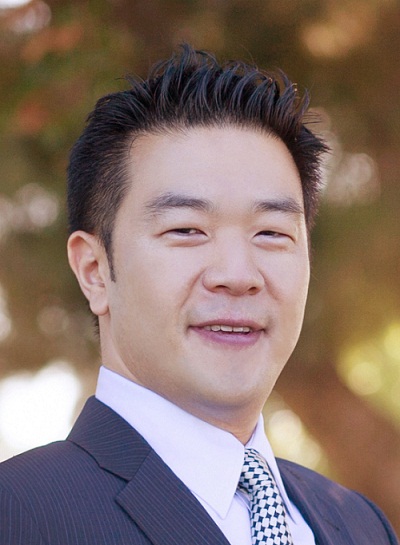 KAIST Professor Sung-Ju Lee Appointed a Technical Program Chair of INFOCOM
Professor Sung-Ju Lee of the Department of Computer Science at KAIST has been appointed to serve as a technical program chair of IEEE INFOCOME. The computer communication conference, started in 1982, is influential in the research fields of the Internet, wireless, and data centers.
Professor Lee is the first Korean to serve as a program chair. He has been acknowledged for his work in network communications. In the 34th conference, which will be held next year, he will take part in selecting 650 experts in the field to become members and supervise the evaluation of around 1,600 papers.
Professor Lee is the leading researcher in the field of wireless mobile network systems. He is a fellow of the Institute of Electrical and Electronics Engineers (IEEE) and served as the general chair of the 20th Association for Computing Machinery (ACM) SIGMOBILE Annual International Conference on Mobile Computing & Networking (MobiCom 2014). He is on the editorial boards of IEEE Transactions on Mobile Computing (TMC) and IEEE Internet of Things Journals.
Professor Lee said, “I hope to continue the traditions of the conference, as well as integrating research from various areas of network communication. I will strive to create a program with high technology transfer probability.”
The 34th IEEE INFOCOM will take place in San Francisco in April 2016.
2015.07.02 View 8702
KAIST Professor Sung-Ju Lee Appointed a Technical Program Chair of INFOCOM
Professor Sung-Ju Lee of the Department of Computer Science at KAIST has been appointed to serve as a technical program chair of IEEE INFOCOME. The computer communication conference, started in 1982, is influential in the research fields of the Internet, wireless, and data centers.
Professor Lee is the first Korean to serve as a program chair. He has been acknowledged for his work in network communications. In the 34th conference, which will be held next year, he will take part in selecting 650 experts in the field to become members and supervise the evaluation of around 1,600 papers.
Professor Lee is the leading researcher in the field of wireless mobile network systems. He is a fellow of the Institute of Electrical and Electronics Engineers (IEEE) and served as the general chair of the 20th Association for Computing Machinery (ACM) SIGMOBILE Annual International Conference on Mobile Computing & Networking (MobiCom 2014). He is on the editorial boards of IEEE Transactions on Mobile Computing (TMC) and IEEE Internet of Things Journals.
Professor Lee said, “I hope to continue the traditions of the conference, as well as integrating research from various areas of network communication. I will strive to create a program with high technology transfer probability.”
The 34th IEEE INFOCOM will take place in San Francisco in April 2016.
2015.07.02 View 8702 -
 Professor Naehyuck Jang was Appointed Technical Program Chair of the Design Automation Conference
Professor Naehyuck Jang of the Electrical Engineering Department at KAIST was appointed as the technical program chair of the Design Automation Conference (DAC). He is the first Asian to serve the conference as the chair. At next year’s conference, he will select 150 program committee members and supervise the selection process of 1,000 papers.
Founded in 1964, DAC encompasses research related to automation of semiconductor processes, which usually involve billions of transistors. More than seven thousand people and 150 companies from all around the world participate, of which only the top 20% of the submitted papers are selected. It is the most prestigious conference in the field of semiconductor automation.
The Design Automation Conference also introduces optimization and automation of design processes of systems, hardware security, automobiles, and the Internet of things. Professor Jang specializes in low power system designs. As an ACM Distinguished Scientist, Professor Jang was elected as the chairman after contributing to this year’s program committee by reforming the process of selection of papers.
Professor Jang said, “This year’s conference represents a departure, where we move from the field of traditional semiconductors to the optimization of embedded system, the Internet of things, and security. He added that “we want to create a paper selection process that can propose the future of design automation.”
The 53rd annual DAC will take place at the Austin Convention Center in Texas in June 2016.
2015.07.02 View 7079
Professor Naehyuck Jang was Appointed Technical Program Chair of the Design Automation Conference
Professor Naehyuck Jang of the Electrical Engineering Department at KAIST was appointed as the technical program chair of the Design Automation Conference (DAC). He is the first Asian to serve the conference as the chair. At next year’s conference, he will select 150 program committee members and supervise the selection process of 1,000 papers.
Founded in 1964, DAC encompasses research related to automation of semiconductor processes, which usually involve billions of transistors. More than seven thousand people and 150 companies from all around the world participate, of which only the top 20% of the submitted papers are selected. It is the most prestigious conference in the field of semiconductor automation.
The Design Automation Conference also introduces optimization and automation of design processes of systems, hardware security, automobiles, and the Internet of things. Professor Jang specializes in low power system designs. As an ACM Distinguished Scientist, Professor Jang was elected as the chairman after contributing to this year’s program committee by reforming the process of selection of papers.
Professor Jang said, “This year’s conference represents a departure, where we move from the field of traditional semiconductors to the optimization of embedded system, the Internet of things, and security. He added that “we want to create a paper selection process that can propose the future of design automation.”
The 53rd annual DAC will take place at the Austin Convention Center in Texas in June 2016.
2015.07.02 View 7079 -
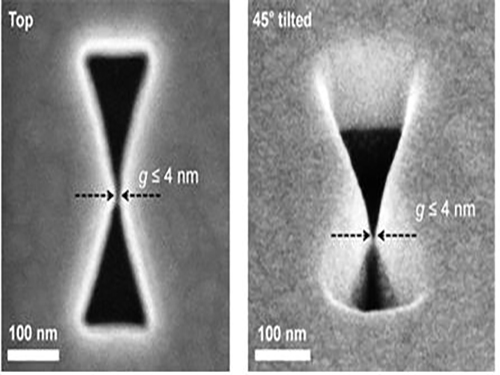 3D Plasmon Antenna Capable of Focusing Light into Few Nanometers
Professors Myung-Ki Kim and Yong-Hee Lee, both of the Physics Department at KAIST, and their research teams have developed a three dimensional (3D) gap-plasmon antenna which can focus light into a space a few nanometers wide. Their research findings were published in the June 10th issue of Nano Letters.
Focusing light into a point-like space is an active research field with many applications. However, concentrating light into a smaller space than its wavelength is often hindered by diffraction. To tackle this problem, many researchers have utilized the plasmonic phenomenon of a metal where light can be confined to a greater extent by overcoming the diffraction limit.
Many researchers have focused on developing a two dimensional (2D) plasmon antenna and were able to focus a light under 5 nanometers wide. However, this 2D antenna revealed a challenge: the light disperses to the opposite end regardless of how small its beam was focused. To solve this difficulty, a 3D structure had to be employed to maximize the light's intensity.
Adopting the proximal focused-ion-beam milling technology, the KAIST research team developed a 3D four nanometer wide gap-plasmon antenna. By squeezing the photons into a 3D nano space of 4 x 10 x 10 nm3 size, the researchers were able to increase the intensity of light by 400,000 times stronger than that of the incident light. Capitalizing on the enhanced intensity of light within the antenna, they intensified the second-harmonic signal and verified that the light was focused in the nano gap by scanning cathodoluminescent images.
The researchers anticipate that this technology will improve the speed of data transfer and processing up to the level of a terahertz (one trillion times per second) and to enlarge the storage volume per unit area on hard disks by 100 times. In addition, high definition images of submolecule size can be taken with actual light, instead of with an electron microscope, while improving the semiconductor process to a smaller size of few nanometers.
Professor Kim said, “A simple yet ingenious idea has shifted the research paradigm from 2D gap-plasmon antennas to 3D antennas. This technology will see numerous applications including in the field of information technology, data storage, imaging medical science, and semiconductor processes.”
The research was sponsored by the National Research Foundation of Korea.
Figure 1: 3D Gap-Plasmon Antenna Structure and Simulation Results
Figure 2 – Constructed 3D Gap-Plasmon Antenna Structure
Figure 3 – Amplified Second Harmonic Signal Generation and Light Focused in the Nano Gap
2015.06.24 View 10407
3D Plasmon Antenna Capable of Focusing Light into Few Nanometers
Professors Myung-Ki Kim and Yong-Hee Lee, both of the Physics Department at KAIST, and their research teams have developed a three dimensional (3D) gap-plasmon antenna which can focus light into a space a few nanometers wide. Their research findings were published in the June 10th issue of Nano Letters.
Focusing light into a point-like space is an active research field with many applications. However, concentrating light into a smaller space than its wavelength is often hindered by diffraction. To tackle this problem, many researchers have utilized the plasmonic phenomenon of a metal where light can be confined to a greater extent by overcoming the diffraction limit.
Many researchers have focused on developing a two dimensional (2D) plasmon antenna and were able to focus a light under 5 nanometers wide. However, this 2D antenna revealed a challenge: the light disperses to the opposite end regardless of how small its beam was focused. To solve this difficulty, a 3D structure had to be employed to maximize the light's intensity.
Adopting the proximal focused-ion-beam milling technology, the KAIST research team developed a 3D four nanometer wide gap-plasmon antenna. By squeezing the photons into a 3D nano space of 4 x 10 x 10 nm3 size, the researchers were able to increase the intensity of light by 400,000 times stronger than that of the incident light. Capitalizing on the enhanced intensity of light within the antenna, they intensified the second-harmonic signal and verified that the light was focused in the nano gap by scanning cathodoluminescent images.
The researchers anticipate that this technology will improve the speed of data transfer and processing up to the level of a terahertz (one trillion times per second) and to enlarge the storage volume per unit area on hard disks by 100 times. In addition, high definition images of submolecule size can be taken with actual light, instead of with an electron microscope, while improving the semiconductor process to a smaller size of few nanometers.
Professor Kim said, “A simple yet ingenious idea has shifted the research paradigm from 2D gap-plasmon antennas to 3D antennas. This technology will see numerous applications including in the field of information technology, data storage, imaging medical science, and semiconductor processes.”
The research was sponsored by the National Research Foundation of Korea.
Figure 1: 3D Gap-Plasmon Antenna Structure and Simulation Results
Figure 2 – Constructed 3D Gap-Plasmon Antenna Structure
Figure 3 – Amplified Second Harmonic Signal Generation and Light Focused in the Nano Gap
2015.06.24 View 10407 -
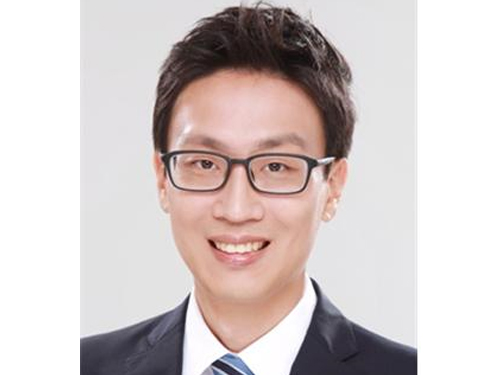 Professor Kyoungsik Yu Receives the Young IT Engineer Award from IEEE and IEIE of Korea
Professor Kyoungsik Yu of KAIST’s Department of Electrical Engineering is the recipient of this year’s Young IT (Information Technology) Engineer Award that was co-hosted by the Institute of Electrical and Electronics Engineers (IEEE), the Institute of Electronics Engineers of Korea (IEIE), and Haedong Science Culture Foundation in Korea. The award was presented on June 22, 2015 at The Ramada Plaza Jeju Hotel on Jeju Island, Korea.
The Young IT Engineer Award is given to emerging scientists who have made significant contributions to the advancement of technology, society, environment, and creative education.
Professor Yu's main research interests are IT, energy, and imaging through miniaturization and integration of optoelectronic devices. His contribution to academic and technological development is reflected in his publication of more than 100 papers in international journals and conferences, which were cited over 2,200 times.
Professor Yu said, “I’m honored to receive this award and am encouraged by it. I also find the award meaningful because the United Nations has designated this year as the “International Year of Light and Light-based Technologies,” the field I have been involved in as a researcher.”
In addition to Korea, the IEEE has jointly hosted and presented this award to researchers in countries such as Chile, Ecuador, Peru, Singapore, and Italy.
2015.06.22 View 12060
Professor Kyoungsik Yu Receives the Young IT Engineer Award from IEEE and IEIE of Korea
Professor Kyoungsik Yu of KAIST’s Department of Electrical Engineering is the recipient of this year’s Young IT (Information Technology) Engineer Award that was co-hosted by the Institute of Electrical and Electronics Engineers (IEEE), the Institute of Electronics Engineers of Korea (IEIE), and Haedong Science Culture Foundation in Korea. The award was presented on June 22, 2015 at The Ramada Plaza Jeju Hotel on Jeju Island, Korea.
The Young IT Engineer Award is given to emerging scientists who have made significant contributions to the advancement of technology, society, environment, and creative education.
Professor Yu's main research interests are IT, energy, and imaging through miniaturization and integration of optoelectronic devices. His contribution to academic and technological development is reflected in his publication of more than 100 papers in international journals and conferences, which were cited over 2,200 times.
Professor Yu said, “I’m honored to receive this award and am encouraged by it. I also find the award meaningful because the United Nations has designated this year as the “International Year of Light and Light-based Technologies,” the field I have been involved in as a researcher.”
In addition to Korea, the IEEE has jointly hosted and presented this award to researchers in countries such as Chile, Ecuador, Peru, Singapore, and Italy.
2015.06.22 View 12060 -
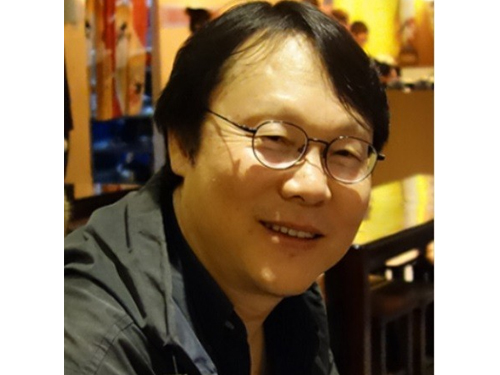 Professor Jeong-Guon Ih Is Appointed the Vice President of the International Commission for Acoustics
Professor Jeong-Guon Ih of the Mechanical Engineering Department at KAIST has been elected to serve as the Vice President of the International Commission for Acoustics (ICA) from June 2015 to the end of 2016. The appointment was made at the meeting of the ICA Board held on June 1, 2015, in Maastricht, the Netherlands.
Professor Ih currently also chairs the Asia-Pacific Acoustics Commission.
Instituted in 1951, the ICA is an academic society that promotes international development and collaboration in all fields of acoustics including research, advancement, education, and standardization. It has a membership of 44 national acoustical societies worldwide and four observer countries.
2015.06.17 View 7117
Professor Jeong-Guon Ih Is Appointed the Vice President of the International Commission for Acoustics
Professor Jeong-Guon Ih of the Mechanical Engineering Department at KAIST has been elected to serve as the Vice President of the International Commission for Acoustics (ICA) from June 2015 to the end of 2016. The appointment was made at the meeting of the ICA Board held on June 1, 2015, in Maastricht, the Netherlands.
Professor Ih currently also chairs the Asia-Pacific Acoustics Commission.
Instituted in 1951, the ICA is an academic society that promotes international development and collaboration in all fields of acoustics including research, advancement, education, and standardization. It has a membership of 44 national acoustical societies worldwide and four observer countries.
2015.06.17 View 7117 -
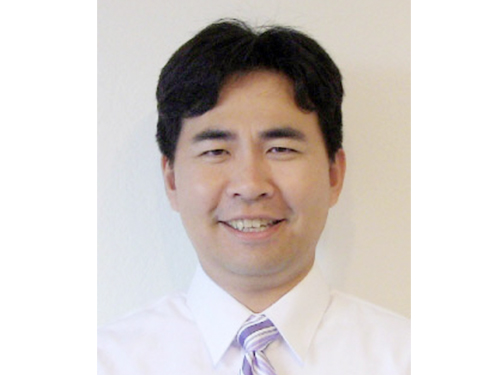 Professor Sung Yong Kim Presents a Keynote Speech at the International Ocean Color Science Meeting (IOCS) 2015
Professor Sung Yong Kim of the Mechanical Engineering Department at KAIST delivered a keynote speech at the International Ocean Color Science Meeting (IOCS) 2015 held in San Francisco on June 15-18, 2015. His speech was entitled “Research and Applications Using Sub-mesoscale GOCI (Geostationary Ocean Color Imager) Data.”
The IOCS, organized by the International Ocean Color Coordinating Group (IOCCG), is a community consultation meeting providing communication and collaboration between space agencies and the ocean color community, building strong ties among international representatives of the ocean color communities, and providing a forum for discussion and the evolution of community thinking on a range of issues.
Professor Kim was recognized for his contribution towards the development of remote exploration of sub-mesoscale processes including eddies, fronts, and environmental fluid dynamics.
He also attended the 26th General Assembly of the International Union of Geodesy and Geophysics (IUGG) in Prague, the Czech Republic, on June 22, 2015 and gave a presentation on the sub-mesoscale eddies circulation research.
2015.06.12 View 9353
Professor Sung Yong Kim Presents a Keynote Speech at the International Ocean Color Science Meeting (IOCS) 2015
Professor Sung Yong Kim of the Mechanical Engineering Department at KAIST delivered a keynote speech at the International Ocean Color Science Meeting (IOCS) 2015 held in San Francisco on June 15-18, 2015. His speech was entitled “Research and Applications Using Sub-mesoscale GOCI (Geostationary Ocean Color Imager) Data.”
The IOCS, organized by the International Ocean Color Coordinating Group (IOCCG), is a community consultation meeting providing communication and collaboration between space agencies and the ocean color community, building strong ties among international representatives of the ocean color communities, and providing a forum for discussion and the evolution of community thinking on a range of issues.
Professor Kim was recognized for his contribution towards the development of remote exploration of sub-mesoscale processes including eddies, fronts, and environmental fluid dynamics.
He also attended the 26th General Assembly of the International Union of Geodesy and Geophysics (IUGG) in Prague, the Czech Republic, on June 22, 2015 and gave a presentation on the sub-mesoscale eddies circulation research.
2015.06.12 View 9353 -
 Science and Technology Policy Professor Chihyung Jeon Awarded Rachel Carson Fellowship
KAIST Graduate School of Science and Technology Policy Professor Chihyung Jeon has been awarded the Rachel Carson Fellowship 2015-2016.
Rachel Carson Center for Environment and Society is a research center for environmental humanities and social sciences, supported by the German Federal Ministry of Education and Research. It was founded by Ludwig-Maximilians-Universität, Munich, Germany and the Deutsches Museum as a joint initiative in 2009.
Rachel Carson Center supports researches in humanities and social sciences on the interactions between the environment and the society, following the footsteps of Rachel Cason, who raised awareness on the chemical environmental damage and started global environmental movement through her published book “Silent Spring” in 1962.
The center is awarding Rachel Carson Fellowships to established researchers to fund their writing and promote exchange of research. This year, 31 fellowships were awarded.
Professor Jeon will conduct research on "A Dredged Nation: The Four Rivers Restoration Project and the Envirotechnical Transformation of South Korea" and will also hold an additional post of International Curatorial Fellow at the Deutsches Museum.
2015.06.11 View 10012
Science and Technology Policy Professor Chihyung Jeon Awarded Rachel Carson Fellowship
KAIST Graduate School of Science and Technology Policy Professor Chihyung Jeon has been awarded the Rachel Carson Fellowship 2015-2016.
Rachel Carson Center for Environment and Society is a research center for environmental humanities and social sciences, supported by the German Federal Ministry of Education and Research. It was founded by Ludwig-Maximilians-Universität, Munich, Germany and the Deutsches Museum as a joint initiative in 2009.
Rachel Carson Center supports researches in humanities and social sciences on the interactions between the environment and the society, following the footsteps of Rachel Cason, who raised awareness on the chemical environmental damage and started global environmental movement through her published book “Silent Spring” in 1962.
The center is awarding Rachel Carson Fellowships to established researchers to fund their writing and promote exchange of research. This year, 31 fellowships were awarded.
Professor Jeon will conduct research on "A Dredged Nation: The Four Rivers Restoration Project and the Envirotechnical Transformation of South Korea" and will also hold an additional post of International Curatorial Fellow at the Deutsches Museum.
2015.06.11 View 10012 -
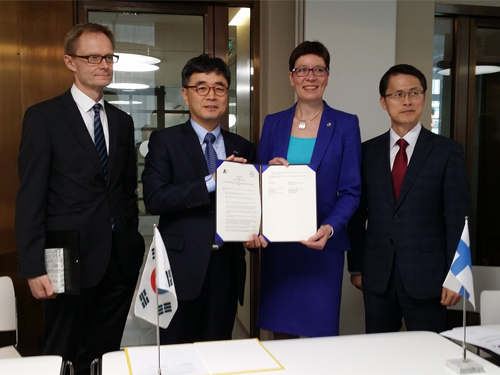 KAIST to Kick-Start the Exchange of Young Researchers with Northern European Universities
KAIST promotes research exchange and cooperation with three universities in Northern Europe.
KAIST has signed a letter of intent (LOI) for the mutual exchange of young researchers and cooperation to collaborate with KTH Royal Institute of Technology and Lund University, both based in Sweden on June 2, 2015, and with Aalto University in Finland on June 4, 2015.
This LOI was the result of the cooperative projects of Korea-Sweden and Korea-Finland Joint Committees on Science and Technology supervised by the Ministry of Science, ICT and Future Planning of Korea.
As agreed in the LOI, KAIST will conduct joint research projects with the three universities by providing students and researchers with opportunities to visit each other through internship programs and workshops and by sharing information on education and research.
Sung-Hyon Mayeng, the Associate Vice President of the International Relations Office at KAIST, said, “It’s an encouraging sign that universities and governments recognize the importance of increasing exchanges among academic and research communities. Expecting more vibrant relationships to be formed between KAIST and the three northern European universities in coming years, I hope that today’s agreement becomes a good basis to spur technological innovations that will not only benefit the regions but also the world.”
Established in 1827, the KTH Royal Institute of Technology is the largest and oldest technical university in Sweden, accounting for one-third of the nation’s technical research and engineering education capacity at university level. The university offers education and research programs from natural sciences to all branches of engineering including architecture, industrial management, and urban planning. According to the QS World University Rankings in 2014, KTH Royal Institute of Technology ranked 27th in engineering and 1st in Northern Europe.
Lund University, Sweden, is one of the oldest and most prestigious universities in northern Europe, consistently ranking among the world’s top 100 universities. In particular, its biological sciences and engineering have shown great strength, placing within the top 60 universities by the Times Higher Education (THE) World University Rankings. The university also receives the largest amount of research funding from the Swedish government.
Aalto University in Finland was created as a merger of three leading Finnish universities: the Helsinki University of Technology (established 1849), the Helsinki School of Economics (established 1904), and the University of Art and Design Helsinki (established 1871). The university nurtures the close collaborations across science, business, and arts to foster multi-disciplinary education and research.
2015.06.04 View 8618
KAIST to Kick-Start the Exchange of Young Researchers with Northern European Universities
KAIST promotes research exchange and cooperation with three universities in Northern Europe.
KAIST has signed a letter of intent (LOI) for the mutual exchange of young researchers and cooperation to collaborate with KTH Royal Institute of Technology and Lund University, both based in Sweden on June 2, 2015, and with Aalto University in Finland on June 4, 2015.
This LOI was the result of the cooperative projects of Korea-Sweden and Korea-Finland Joint Committees on Science and Technology supervised by the Ministry of Science, ICT and Future Planning of Korea.
As agreed in the LOI, KAIST will conduct joint research projects with the three universities by providing students and researchers with opportunities to visit each other through internship programs and workshops and by sharing information on education and research.
Sung-Hyon Mayeng, the Associate Vice President of the International Relations Office at KAIST, said, “It’s an encouraging sign that universities and governments recognize the importance of increasing exchanges among academic and research communities. Expecting more vibrant relationships to be formed between KAIST and the three northern European universities in coming years, I hope that today’s agreement becomes a good basis to spur technological innovations that will not only benefit the regions but also the world.”
Established in 1827, the KTH Royal Institute of Technology is the largest and oldest technical university in Sweden, accounting for one-third of the nation’s technical research and engineering education capacity at university level. The university offers education and research programs from natural sciences to all branches of engineering including architecture, industrial management, and urban planning. According to the QS World University Rankings in 2014, KTH Royal Institute of Technology ranked 27th in engineering and 1st in Northern Europe.
Lund University, Sweden, is one of the oldest and most prestigious universities in northern Europe, consistently ranking among the world’s top 100 universities. In particular, its biological sciences and engineering have shown great strength, placing within the top 60 universities by the Times Higher Education (THE) World University Rankings. The university also receives the largest amount of research funding from the Swedish government.
Aalto University in Finland was created as a merger of three leading Finnish universities: the Helsinki University of Technology (established 1849), the Helsinki School of Economics (established 1904), and the University of Art and Design Helsinki (established 1871). The university nurtures the close collaborations across science, business, and arts to foster multi-disciplinary education and research.
2015.06.04 View 8618 -
 The Acoustical Society of America Names Yang Hann Kim of KAIST the Recipient of the 2015 Rossing Prize in Acoustics Education
The award, given to Dr. Kim in recognition of his contributions to the advancement of acoustics education, will be presented during the 170th Meeting of the Acoustical Society of America on November 2-6, 2015 in Jacksonville, Florida.
The Acoustical Society of America (ASA) announced today that Professor Yang Hann Kim of the Mechanical Engineering Department at the Korea Advanced Institute of Science and Technology (KAIST) was the 12th recipient of the Rossing Prize in Acoustics Education. Dr. Kim is the first recipient selected from a non-English-speaking nation.
The Rossing Prize in Acoustics Education was established in 2003 from a generous gift made to the ASA Foundation by Thomas D. Rossing to recognize an individual who has made significant contributions to the advancement of acoustics education through distinguished teaching, creation of educational materials, textbook writing, and other activities.
During 25 years of teaching and conducting research in acoustics, noise, and vibration at KAIST, Dr. Kim has advised 26 doctorates and published over 200 research papers in journals such as Journal of Acoustical Society of America, Journal of Sound and Vibration, and Journal of Mechanical Systems and Signal Processing. He also wrote two acoustics textbooks for university education, which has been widely read worldwide. The textbook titles are: Sound Propagation: An Impedance Based Approach (Wiley, July 2010) and with the co-author, Dr. Jung-Woo Choi, Sound Visualization and Manipulation (Wiley, September 2013).
Since 2009, Professor Kim has lectured an online course entitled “Introduction to Acoustics,” offering students and the general public throughout the world guidance to study acoustics through the basic concept of impedance, for example, on vibrations and waves.
Dr. Kim will receive the award during ASA’s 170th conference to be held on November 2-6, 2015 at the Hyatt Regency Jacksonville Riverfront Hotel in Jacksonville, Florida, USA.
For the list of previous recipients of the Rossing Prize in Acoustics Education,
see:http://acousticalsociety.org/funding_resources/prizes#rossing
2015.06.04 View 9264
The Acoustical Society of America Names Yang Hann Kim of KAIST the Recipient of the 2015 Rossing Prize in Acoustics Education
The award, given to Dr. Kim in recognition of his contributions to the advancement of acoustics education, will be presented during the 170th Meeting of the Acoustical Society of America on November 2-6, 2015 in Jacksonville, Florida.
The Acoustical Society of America (ASA) announced today that Professor Yang Hann Kim of the Mechanical Engineering Department at the Korea Advanced Institute of Science and Technology (KAIST) was the 12th recipient of the Rossing Prize in Acoustics Education. Dr. Kim is the first recipient selected from a non-English-speaking nation.
The Rossing Prize in Acoustics Education was established in 2003 from a generous gift made to the ASA Foundation by Thomas D. Rossing to recognize an individual who has made significant contributions to the advancement of acoustics education through distinguished teaching, creation of educational materials, textbook writing, and other activities.
During 25 years of teaching and conducting research in acoustics, noise, and vibration at KAIST, Dr. Kim has advised 26 doctorates and published over 200 research papers in journals such as Journal of Acoustical Society of America, Journal of Sound and Vibration, and Journal of Mechanical Systems and Signal Processing. He also wrote two acoustics textbooks for university education, which has been widely read worldwide. The textbook titles are: Sound Propagation: An Impedance Based Approach (Wiley, July 2010) and with the co-author, Dr. Jung-Woo Choi, Sound Visualization and Manipulation (Wiley, September 2013).
Since 2009, Professor Kim has lectured an online course entitled “Introduction to Acoustics,” offering students and the general public throughout the world guidance to study acoustics through the basic concept of impedance, for example, on vibrations and waves.
Dr. Kim will receive the award during ASA’s 170th conference to be held on November 2-6, 2015 at the Hyatt Regency Jacksonville Riverfront Hotel in Jacksonville, Florida, USA.
For the list of previous recipients of the Rossing Prize in Acoustics Education,
see:http://acousticalsociety.org/funding_resources/prizes#rossing
2015.06.04 View 9264 -
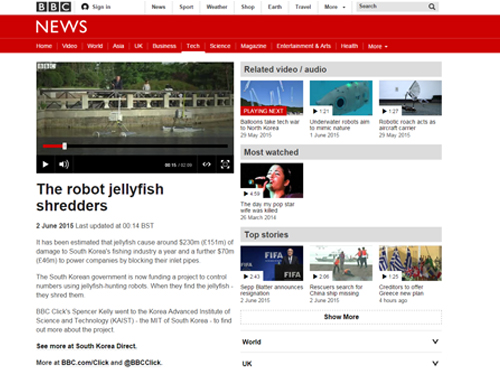 BBC Feautres KAIST's Jellyfish Robot
Click, a weekly BBC television program covering news and recent developments in science and technology, introduced KAIST’s robotics project, JEROS, which has been conducted by Professor Hyun Myung of the Urban Robotics Lab (http://urobot.kaist.ac.kr/). JEROS is a robotics system that detects, captures, and removes jellyfish in the ocean. For the show, please click the link below:
BBC News, Click, June 2, 2015
The Robot Jellyfish Shredders
http://www.bbc.com/news/technology-32965841
2015.06.03 View 9675
BBC Feautres KAIST's Jellyfish Robot
Click, a weekly BBC television program covering news and recent developments in science and technology, introduced KAIST’s robotics project, JEROS, which has been conducted by Professor Hyun Myung of the Urban Robotics Lab (http://urobot.kaist.ac.kr/). JEROS is a robotics system that detects, captures, and removes jellyfish in the ocean. For the show, please click the link below:
BBC News, Click, June 2, 2015
The Robot Jellyfish Shredders
http://www.bbc.com/news/technology-32965841
2015.06.03 View 9675